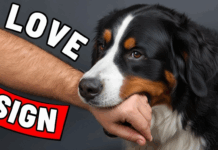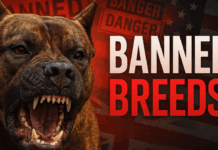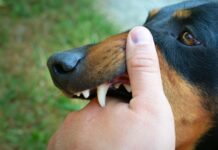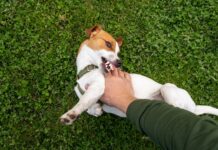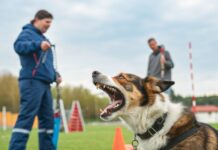Last Updated on February 20, 2024 by Dogs Vets
The article is developed in partnership with BetterHelp.
Life can be ruff. Stress is everywhere — school, work, family, you name it. Sometimes, it can feel like the world is out to get you, and let’s be real, that can take a major toll on your mental health.
If you’re feeling overwhelmed and just need a friend, maybe you’re barking up the wrong tree by not considering our furry companions. There’s a reason we call dogs “man’s best friend,” and it’s not just because they’re adorable and fluffy.
Science actually backs up the power of pups to help us chill out and feel less stressed. With therapeutic benefits that range from increased oxytocin levels to reducing feelings of loneliness, dogs can be a great source of support for those experiencing mental health challenges.
What science has to say
So, how exactly do dogs work their magic to bust stress? It’s like a superpower cocktail for our brains. For starters, your stress hormones become unbalanced when you’re constantly in a state of stress. It’s not just about hormones, though.
Our heart rates go crazy when we’re stressed, but dogs somehow know exactly how to lower it. Petting a dog, or even just being around one, can relax your body. Plus, having a dog gets you moving.
Walks, runs, and playing fetch are all fantastic for your physical and mental health. Exercise is proven to knock stress levels down, too.
Dogs: A tail-wagging antidote to stress
Stress can make you want to hide under the covers and pretend the world doesn’t exist. But dogs give us a reason to get out of bed and get going. They offer companionship when it feels like no one else gets you.
You’re not alone with a canine by your side. This furry friendship combats loneliness and can do wonders for depression and anxiety. As humans, we can get lost in our heads sometimes. But dogs bring us back to the present moment. It can be tough to worry about your problems when your pup is begging for belly rubs.
Let’s not forget those wet doggy kisses, too. You might think a slobbery dog face is gross, but studies show that our canine companions have good bacteria in their mouths.
This friendly bacteria might work magic by boosting our gut health and improving our immune systems. And get this — a healthy gut might be connected to better mental health. It’s all about balance and harmony in our bodies, and dogs seem to help us achieve that.
Beyond everyday stress: When dogs shine brightest
The thing about dogs is that they don’t just sniff out everyday stress. They’re superheroes in training when it comes to some really tough situations.
Let’s talk about post-traumatic stress disorder (PTSD). Imagine feeling the stress of a terrifying situation even when it’s long past. It’s what people with PTSD live with every day.
That’s where service dogs come in. Specially trained to pick up on signs of panic and anxiety, these dedicated pups aren’t just best friends. They’re lifelines. They can retrieve medication, provide a comforting physical presence during flashbacks, and even help their person navigate crowded spaces without getting overwhelmed.
Dogs also play a huge role in hospitals, offering comfort and a dose of happiness to sick kids and adults going through rough times.
Therapy dogs can make people feel safe and less anxious, easing loneliness and offering the kind of touch that just seems to make everything a little bit okay. These amazing pups even visit schools, libraries, and senior centers.
For some, stress and anxiety can develop into more serious problems like substance use disorder. This disorder is when relying on unhealthy ways to cope, like drugs and alcohol, becomes an addiction. It’s not easy to conquer, but the right support makes a world of difference.
A holistic approach is crucial, including talk therapy, proper medication, and healthy coping strategies. Online platforms like BetterHelp offer convenient and affordable access to licensed therapists who can guide you through the process. And guess what? Dogs fit into that picture perfectly.
Dogs teach us, too
They may be experts at chilling us out, but dogs also teach us some crucial stress-reducing skills, whether we realize it or not.
Taking care of a dog forces us to step outside our own heads for a bit. We have to focus on their needs, which takes our minds off of our own worries. They live every day in the present moment, always there for a belly rub or a game of fetch with total enthusiasm. Maybe they know something we don’t.
Dogs can also teach us responsibility, which helps give us a sense of purpose and routine. And when you take good care of them, there’s that burst of pride. It’s not a bad way to combat stressful feelings of low self-worth.
Plus, who can’t resist that tail wag when you walk in the door? It turns out that dogs might just be the best stress-relievers and best friends out there, teaching us about life and love one wag at a time.
Finding your perfect stress-busting buddy
Ready to explore the stress-busting benefits of a furry friend? Remember, every dog is unique, just like us. You have to find the right match for your lifestyle and personality.
If you’re a couch potato, you shouldn’t adopt a dog that needs hours of exercise every day. And if you live in a small apartment, it might be better to skip the Great Dane and opt for a smaller breed.
But don’t worry. There are plenty of dogs out there looking for their forever homes, and chances are one of them is perfect for you.
Organizations like the Humane Society and ASPCA can help you find a four-legged companion that suits your needs. And don’t forget to visit your local animal shelter — you never know, your new stress-busting buddy might be waiting for you there.
Facts Check
We hope you enjoyed this article… What are your thoughts?
Please feel free to share this article!
e strive to provide the latest valuable information for pet lovers with accuracy and fairness. If you would like to add to this post or advertise with us, don’t hesitate reach us.
If you see something that doesn’t look right, contact us!

